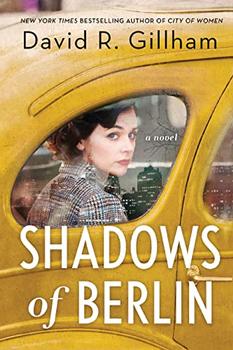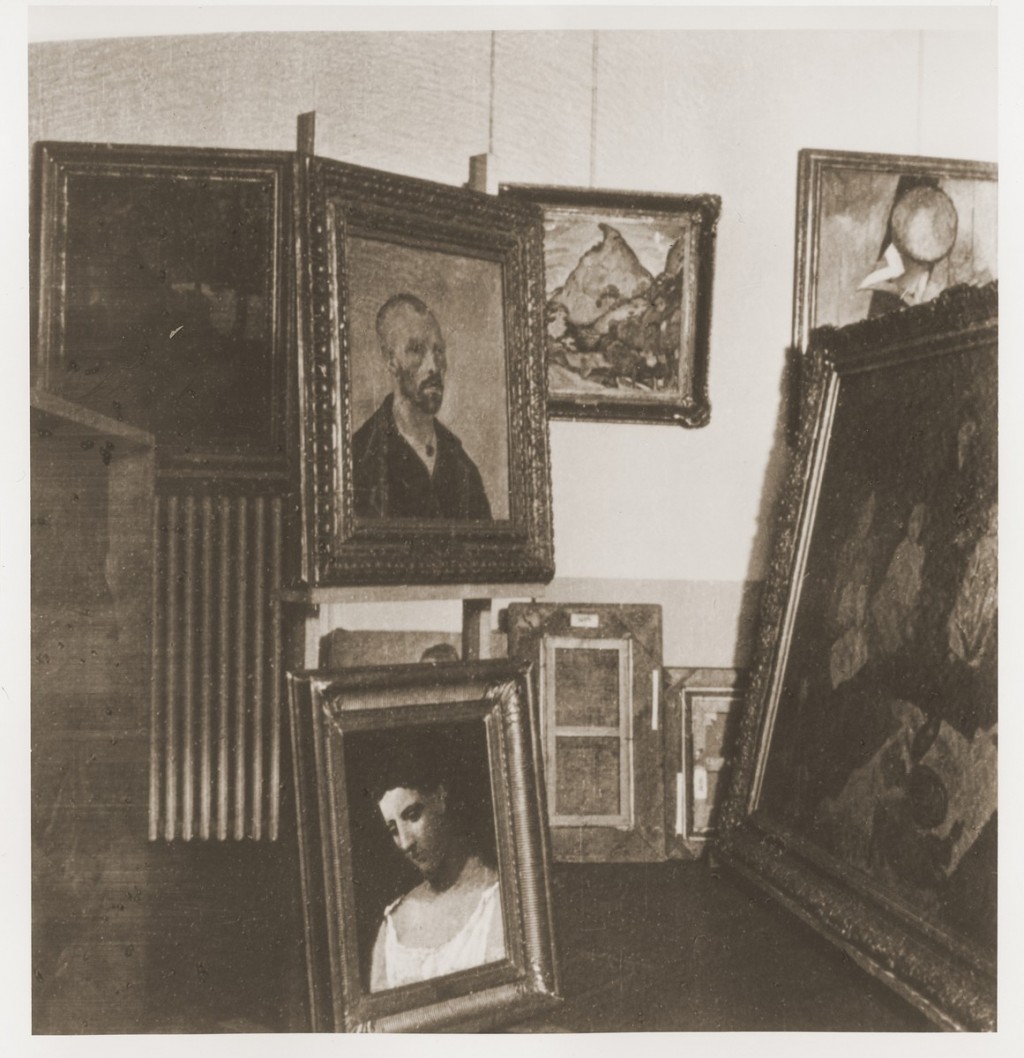Summary | Excerpt | Reading Guide | Discuss | Reviews | Beyond the Book | Read-Alikes | Genres & Themes | Author Bio

A Novel
by David R. GillhamThis article relates to Shadows of Berlin
 In David R. Gillham's Shadows of Berlin, the protagonist's mother was a modern artist whose work was banned by the Hitler Regime.
In David R. Gillham's Shadows of Berlin, the protagonist's mother was a modern artist whose work was banned by the Hitler Regime.
Adolf Hitler didn't originally intend to have a career in politics, planning instead to be a professional artist. In 1907 at the age of 18, he applied to Vienna's Academy of Fine Arts, but was rejected — twice. Still, he was able to make a reliable living selling his paintings to tourists before leaving for Munich in 1913, where he worked on commission for several wealthy patrons. The dismissal of his work by Austria's artistic elite struck a nerve, though, and their refusal to take his paintings seriously had consequences the art world never could have foreseen.
Over the ensuing decades, Hitler came to power as the leader of the National Socialist German Workers' Party (aka the Nazis), becoming Chancellor of Germany in 1933. His attacks on modern art began almost immediately thereafter, with orders issued to confiscate any art he deemed "degenerate." Works fitting this definition included anything that didn't depict its subject realistically (which was his own preferred style of painting). During a 1935 speech he declared, "It is not the mission of art to wallow in filth for filth's sake, to paint the human being only in a state of putrefaction, to draw cretins as symbols of motherhood, or to present deformed idiots as representatives of manly strength." Between 1933 and 1945, more than 15,500 objects were seized from museums, including works by artists such as Edvard Munch, Pablo Picasso and Vincent van Gogh.
Hitler decided to hold an art show in 1937 to clarify what "truly German art" should look like, and placed Joseph Goebbels in charge of curating it. A month before its opening, though, Hitler was shown the works that were to be included, and he was reportedly infuriated by some of the selections — they were too modern. To mollify Hitler, Goebbels decided to have two exhibits instead. The first, called the Great German Art Exhibition, featured works Hitler considered representative of German cultural norms: "Kinder, Küche, Kirche" ("children, kitchen, church," taken to refer to family, home and religion). On the approved list were paintings that showed statuesque blonde peasant women and idealized German landscapes, among other "wholesome" subjects.
A few blocks away, the other art show was staged: Die Ausstellung Entartete Kunst (The Exhibition of Degenerate Art), which featured works by 112 modern artists, including German artists (such as Paul Klee, Franz Marc and Ernst Ludwig Kirchner) as well as work by artists from other countries (including Picasso, Marc Chagall and Wassily Kandinsky). The point of this second exhibit was to encourage the public to mock the art and its creators, which Hitler maintained were part of a plot by Bolsheviks and Jews to corrupt good Germans. The venue was picked for its dark, narrow rooms, and the paintings were deliberately hung askew, mislabeled or unframed, giving the whole show a shabby, disreputable appearance. Statements were scrawled on the walls mocking the art, such as "how sick minds viewed nature." Artworks were organized into rooms by category; the one reserved for abstract painting, for example, was labeled "the insanity room," with the accompanying booklet stating, "In the paintings and drawings of this chamber of horrors there is no telling what was in the sick brains of those who wielded the brush or the pencil." Minors were prohibited from attending, lest they be corrupted by the art. Goebbels even hired actors to wander around the exhibit criticizing the works.
The Degenerate Art Exhibit was extremely popular, attracting over two million visitors (around four times the number who visited the Great German Art Exhibition). It's speculated that the show's popularity was due in part to some realizing it might be their last chance to see these works, while others likely attended out of curiosity to see what all the fuss was about.
Unfortunately, many of the featured works were burned after the exposition. Some of the artists emigrated to other countries, some modified their style to toe the party line (at least in public), and some suffered the wrath of the Nazi establishment. Jewish artists in particular were targeted. Some of the works of art were sold at auction to finance the Nazi Party, while others were hidden away. Over time many have resurfaced (one collection as recently as 2012) but some remain unaccounted for.
Art confiscated by the Nazis, courtesy of the United States Holocaust Memorial Museum
Filed under Music and the Arts
![]() This "beyond the book article" relates to Shadows of Berlin. It originally ran in May 2022 and has been updated for the
January 2023 paperback edition.
Go to magazine.
This "beyond the book article" relates to Shadows of Berlin. It originally ran in May 2022 and has been updated for the
January 2023 paperback edition.
Go to magazine.
Your guide toexceptional books
BookBrowse seeks out and recommends the best in contemporary fiction and nonfiction—books that not only engage and entertain but also deepen our understanding of ourselves and the world around us.